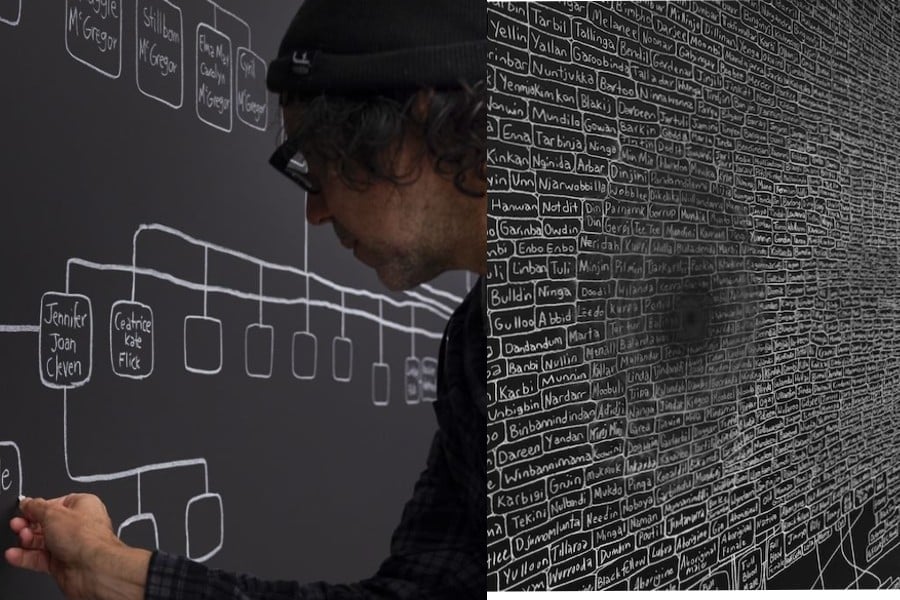
For the first time in history, Australia has taken home the gold in the art olympics. Since 1865, Venezia Biennale has existed as a competitive bastion of the arts. At this year's ceremony, Kamilaroi and Bigambul artist Archie Moore was awarded as a recipient of the Golden Lion Award in the National Pavilion category. Moore's 'kith and kin' installation of hand-drawn chalk on blackboard has been recognised as "quietly powerful" work, and identifiably "stands out for its strong aesthetic, its lyricism and its invocation of shared loss", while also offering "a glimmer of possibility for recuperation". Chaired by Julia Bryan-Wilson, the official Biennale Jury awarded the official prizes. The Awards Ceremony took place in Venice on Saturday, 20th April 2024. In its 60th edition this year, Moore's acceptance marks the second time an Indigenous Australian has represented the nation.
The title is a wryly subversive nod to the westernised canon of the family tree. Aboriginal kinship, as it has existed as the oldest recorded history of humanity of over 65,000 years. In 'kith and kin', this includes real and speculative ancestral lineage of the artist.
Commissioned by Creative Australia, 'kith and kin' encompass four walls of the pavilion from ceiling to floor. A shallow pool with an altar-structure designed by Meriam Mir and Kaurareg architect Kevin O'Brien covers the base foundation. On top of the surface rests a platform supported by stilts, ringed by columns of white paper gridded in tessellations. They allude to the loss of life and de-identified coronial reports of more than 560 First Nations people. As identified by the Royal Commission into Aboriginal Deaths in Custody of 1991, the 500 reams of documentation are a grave reminder of the incarceration rates and discriminatory edicts of the country past and present. Yet the exhibition is tinged with hope. Moore's work tends to rehabilitation for the future, an important precedent in First Nations collectivism and kinship.
View this post on Instagram
Can you see Moore's winning work outside of the Venice Biennale?
After the ceremony concludes, the work will be available for viewing at QAGOMA in Brisbane, Australia.



